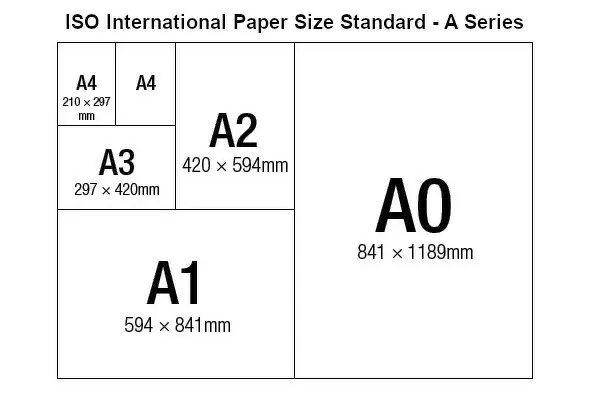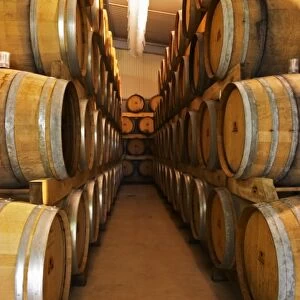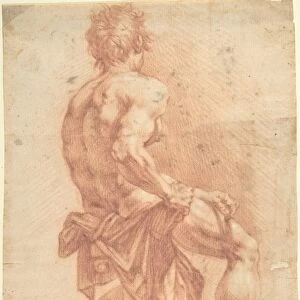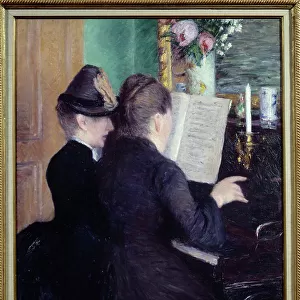Fine Art Print : Early GPS equipment
![]()

Fine Art Prints from Science Photo Library
Early GPS equipment
Early GPS equipment. This equipment was among the first to use the Global Positioning System (GPS) that started in 1978. This equipment was built by Prakla-Seismos. GPS is a system of satellites in Earth orbit that broadcast signals. These allow ground-based equipment, like the one seen here, to calculate its position, elevation and the precise time. Modern GPS receivers are now small enough to be carried by hand. The GPS satellites must carry extremely accurate clocks, and need to take into account relativistic effects. The speeds of the orbiting satellites, relative to the Earth, cause a small but measurable slowing of time, as predicted by Einsteins Special Relativity theory
Science Photo Library features Science and Medical images including photos and illustrations
Media ID 6429731
© VOLKER STEGER/SCIENCE PHOTO LIBRARY
1900s 1970s 1980s Communications Computer Computing Device Early Global Positioning System Instrument Wire Wires
A2 (42x59cm) Fine Art Print
Step into the past with our latest addition to the Media Storehouse Fine Art Prints collection: Early GPS Equipment. Witness the history of navigation technology with this captivating image of one of the first devices to utilize the Global Positioning System, dating back to 1978. Crafted by Prakla-Seismos, this early GPS equipment represents a groundbreaking moment in the world of geolocation and communication. Bring a piece of scientific history into your home or office with this stunning, high-quality print. Perfect for tech enthusiasts, history buffs, or anyone who appreciates the beauty and evolution of technology.
Our Fine Art Prints are printed on 100% acid free, PH neutral paper with archival properties. This printing method is used by museums and art collections to exhibit photographs and art reproductions. Hahnemühle certified studio for digital fine art printing. Printed on 308gsm Photo Rag Paper.
Our fine art prints are high-quality prints made using a paper called Photo Rag. This 100% cotton rag fibre paper is known for its exceptional image sharpness, rich colors, and high level of detail, making it a popular choice for professional photographers and artists. Photo rag paper is our clear recommendation for a fine art paper print. If you can afford to spend more on a higher quality paper, then Photo Rag is our clear recommendation for a fine art paper print.
Estimated Image Size (if not cropped) is 42cm x 51.9cm (16.5" x 20.4")
Estimated Product Size is 42cm x 59.4cm (16.5" x 23.4")
These are individually made so all sizes are approximate
Artwork printed orientated as per the preview above, with portrait (vertical) orientation to match the source image.
EDITORS COMMENTS
This print showcases early GPS equipment, a significant milestone in the development of navigation technology. Manufactured by Prakla-Seismos, this pioneering device was among the first to utilize the Global Positioning System (GPS) that commenced its operations in 1978. The system relies on a network of satellites orbiting Earth, transmitting signals that enable ground-based equipment like the one depicted here to accurately determine its position, elevation, and even the precise time. During this era captured in the image, GPS receivers were considerably larger and bulkier compared to their modern counterparts which can now be conveniently carried by hand. However, what remains constant is the indispensable need for these satellites to carry incredibly accurate clocks while accounting for relativistic effects. Due to their high speeds relative to Earth's rotation, these orbiting satellites experience a slight but measurable slowing of time as predicted by Einstein's Special Relativity theory. The intricate web of wires seen connecting various components within this early GPS instrument highlights both its complexity and technological sophistication for its time. This photograph serves as a testament to human ingenuity and scientific progress during the late 20th century when groundbreaking advancements such as GPS revolutionized communication and navigation systems worldwide.
MADE IN THE UK
Safe Shipping with 30 Day Money Back Guarantee
FREE PERSONALISATION*
We are proud to offer a range of customisation features including Personalised Captions, Color Filters and Picture Zoom Tools
SECURE PAYMENTS
We happily accept a wide range of payment options so you can pay for the things you need in the way that is most convenient for you
* Options may vary by product and licensing agreement. Zoomed Pictures can be adjusted in the Basket.









